
Itasca State Park: The Birthplace of the Mighty Mississippi
Discover Itasca State Park in Minnesota, where the Mississippi River begins. Explore lakes, old-growth forests, and vibrant fall foliage in Minnesota's oldest state park.
Itasca State Park is a gem in Minnesota, known as the headwaters of the Mississippi River. Established in 1891, it is the oldest state park in the state and offers a rich blend of history and natural beauty. Visitors can walk across the stones at the river's source, where the mighty Mississippi begins its journey to the Gulf of Mexico. The park spans over 32,000 acres and features more than 100 lakes, making it a paradise for water enthusiasts. Lake Itasca, the park's centerpiece, is perfect for canoeing, kayaking, and fishing. The park is also home to old-growth forests and a variety of wildlife, including deer, black bears, and bald eagles. Hiking and biking trails weave through the park, offering stunning views of the landscape. The Wilderness Drive and the scenic byway provide an excellent opportunity to explore the park by car. During the fall, the park's foliage turns into a vibrant display of colors, making it a must-visit for leaf peepers. The historic Douglas Lodge offers charming accommodations and a glimpse into the park's past.
Local tips in Itasca State Park
- Visit in early morning to avoid crowds at the headwaters of the Mississippi.
- Bring mosquito repellent during summer months.
- Rent a canoe or kayak to fully enjoy Lake Itasca.
- Pack a picnic and enjoy it at one of the park’s scenic spots.
- Stay at Douglas Lodge for a historic and cozy experience.
- Check the visitor center for guided tours and educational programs.
When is the best time to go to Itasca State Park?
Unmissable attractions to see
Evergreen Fun Park
Experience endless fun and excitement at Evergreen Fun Park, the ultimate amusement destination in Park Rapids, Minnesota, for families and thrill-seekers alike.
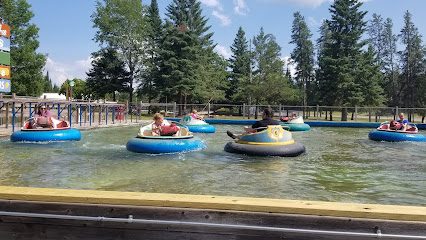
Lake Itasca Region Pioneer Farmers (LIRPF)
Explore the Lake Itasca Region Pioneer Farmers, a historical gem showcasing Minnesota's agricultural heritage through authentic exhibits and engaging demonstrations.
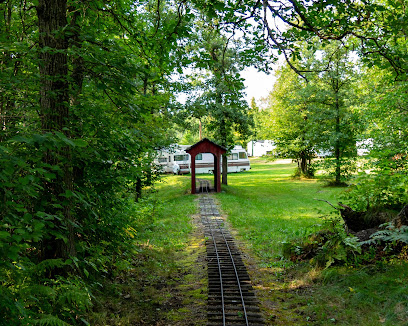
Jacob V. Brower Visitor Center
Discover the beauty and biodiversity of Minnesota's Itasca State Park at the Jacob V. Brower Visitor Center, your gateway to adventure and education.
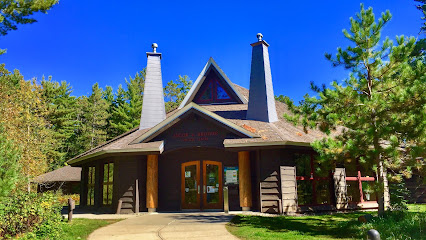
Itasca State Park, East Entrance
Explore the stunning landscapes and rich history of Itasca State Park, home to the headwaters of the Mississippi River and endless outdoor adventures.

Itasca State Park, North Entrance
Experience the breathtaking beauty of Itasca State Park, the headwaters of the Mississippi River, with stunning lakes, lush forests, and abundant wildlife.
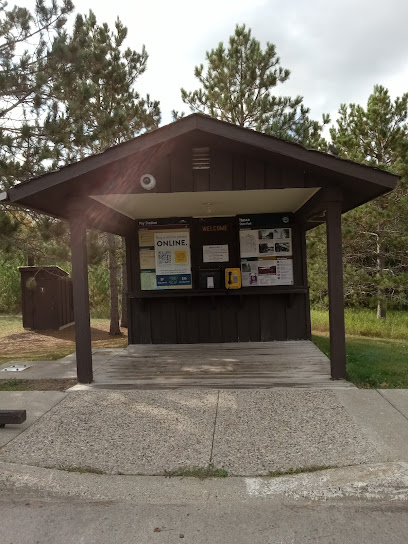
Preacher's Grove
Explore Preacher's Grove in Pinewood, MN - A serene hiking area surrounded by nature's beauty, perfect for adventurers and nature lovers alike.
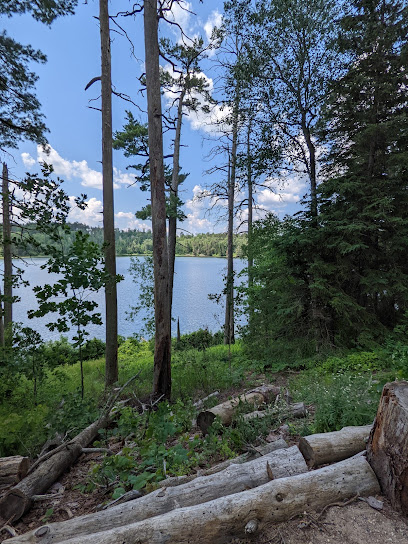
Itasca State Park, South Entrance
Explore Itasca State Park, the birthplace of the Mississippi River, where lush forests and pristine lakes await your adventure in Minnesota's natural beauty.
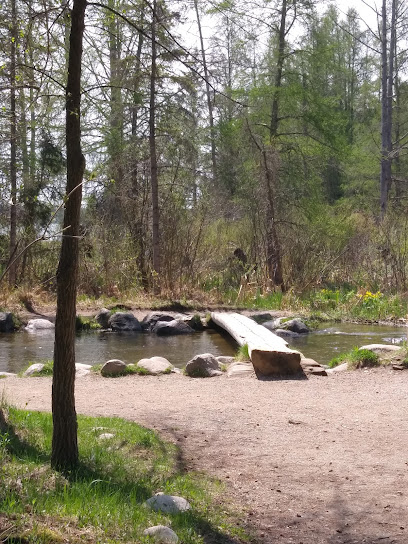
Markets, malls and hidden boutiques
Itasca State Park
Discover the breathtaking landscapes and rich wildlife of Itasca State Park, home to the headwaters of the Mississippi River in Minnesota.
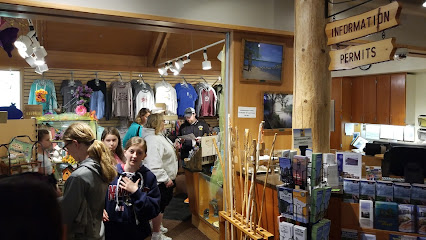
218 Clothing+Gift
Discover unique gifts and local treasures at 218 Clothing + Gift in Bemidji, Minnesota, where every item tells a story.
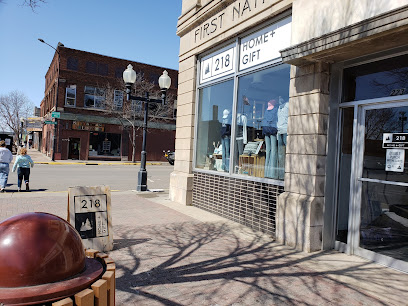
Gifts O' the Wild
Explore Gifts O' the Wild in Laporte, Minnesota, a unique gift shop filled with locally crafted treasures and souvenirs that capture the spirit of the North Woods.
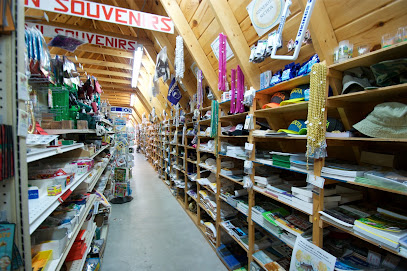
Bearly Used Thrift Store
Explore the charm of Bearly Used Thrift Store in Park Rapids, where unique finds and local treasures await every visitor.
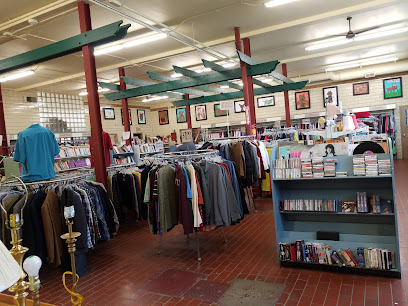
Smokey Hills Outdoor Store
Discover your ultimate outdoor adventure at Smokey Hills Outdoor Store, where adventure meets quality gear in the heart of Minnesota.
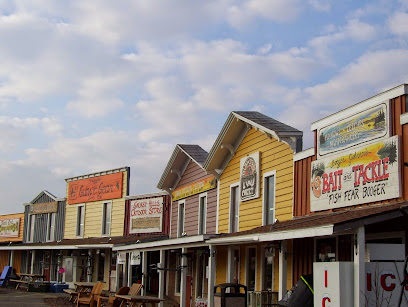
Angelic Enterprises
Explore Angelic Enterprises in Park Rapids, MN - a unique consignment shop filled with vintage clothing, home decor, and hidden treasures waiting to be discovered.

Itasca Sports, Inc.
Discover outdoor adventure at Itasca Sports, Inc., your go-to recreation center for rentals and supplies in the heart of Itasca State Park.
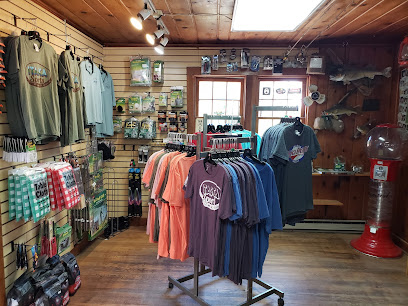
Amish Oak & Americana Furnishings
Explore the charm of Amish Oak & Americana Furnishings: Handcrafted furniture, unique gifts, and stylish women's clothing await you in Park Rapids.
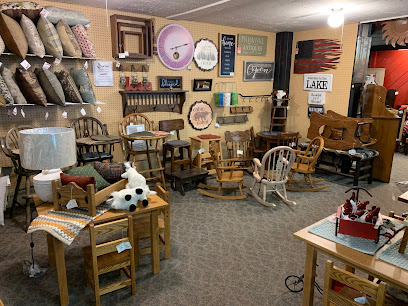
Enjoy
Explore Enjoy in Park Rapids: a delightful gift shop brimming with unique candies, ice creams, and charming souvenirs for all ages.

ROCK CREEK GENERAL STORE
Discover the charm of Rock Creek General Store, the perfect stop for outdoor adventurers and local goods, just minutes from Itasca State Park.

Terra Reflections
Discover unique local crafts and gifts at Terra Reflections, your go-to gift shop in Walker, Minnesota, for authentic souvenirs and handmade treasures.

Itasca Moccasin & Gifts
Experience the artistry of handcrafted leather goods at Itasca Moccasin & Gifts in Lake George, MN - a treasure trove for tourists seeking unique souvenirs.
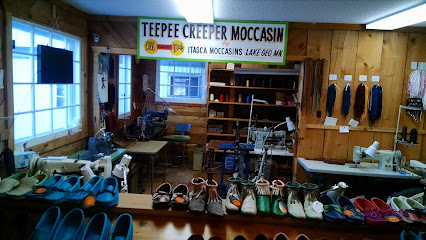
The Tin Ceiling Gallery
Explore local artistry and unique gifts at The Tin Ceiling Gallery in Park Rapids, where every purchase supports Minnesota's vibrant art scene.
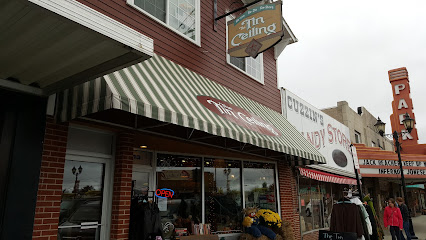
Glik's
Explore Glik's in Park Rapids for a unique boutique shopping experience offering trendy clothing and accessories for men and women.
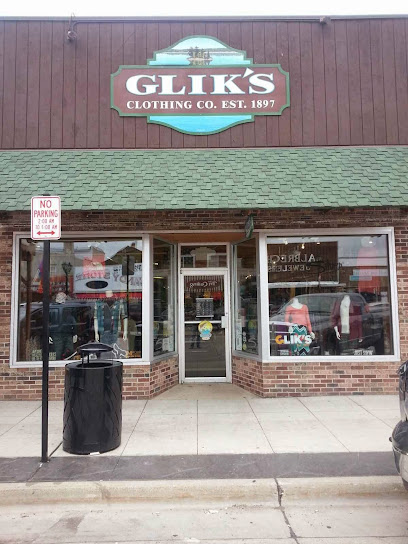
Rustic Cabin Decor
Explore Rustic Cabin Decor in Park Rapids, MN - Your destination for unique gifts, furniture, and home goods that embody cabin charm.

Essential bars & hidden hideouts
Volstead House - Whiskey Bar & Speakeasy Eagan
Experience the enchanting ambiance and exceptional whiskey selection at Volstead House, Eagan's premier speakeasy and cocktail bar.
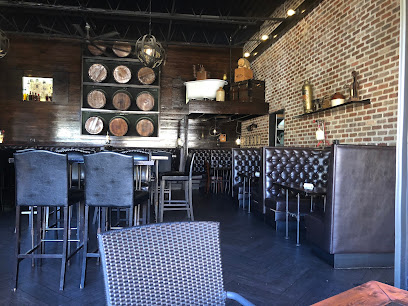
The Pickled Loon Saloon
Discover the flavors of Minnesota at The Pickled Loon Saloon, where delicious grilled dishes and a warm atmosphere await every traveler.
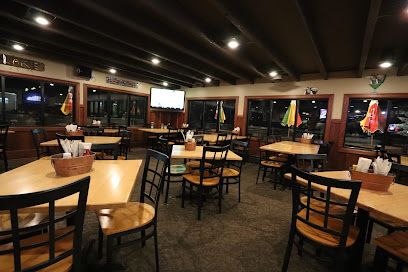
Fox & Turtle
Discover the best of American dining at Fox & Turtle in Itasca, where flavors meet a warm atmosphere for an unforgettable experience.
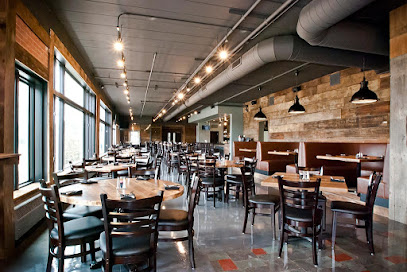
Royal Bar
Discover the Royal Bar, a cozy and affordable gem in Park Rapids, offering local drinks, live music, and a friendly atmosphere.
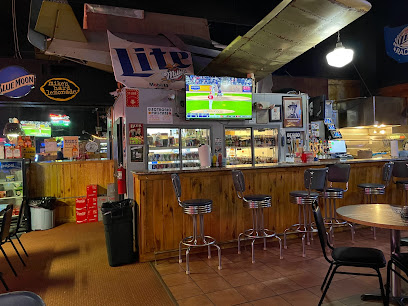
Ice Cracking Lodge
Discover the cozy charm of Ice Cracking Lodge in Minnesota, where great food, refreshing drinks, and stunning views await you.

Knob & Kettle Restaurant And Lounge
Discover the heart of Laporte at Knob & Kettle Restaurant And Lounge, where comfort food meets a cozy atmosphere.

Rapids Brewing Company
Discover unique craft beers and local flavors at Rapids Brewing Company, a must-visit brewpub in Grand Rapids, Minnesota.
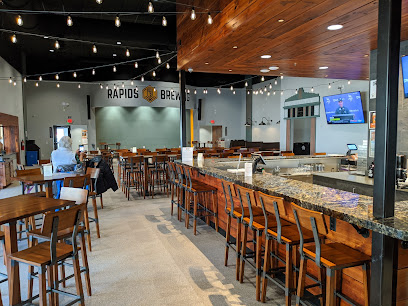
Foxy's Bar & Grill
Discover the delicious flavors and vibrant atmosphere of Foxy's Bar & Grill in Park Rapids, the perfect spot for great food and local brews.
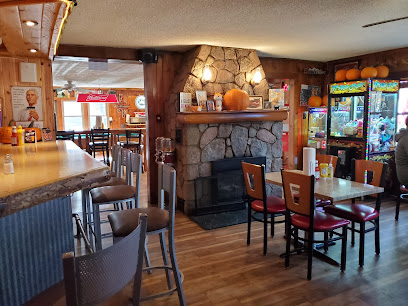
Florio's Grill and Tavern
Experience the charm of Florio's Grill and Tavern in Cohasset, MN, where delicious grilled dishes and a welcoming pub atmosphere await your visit.
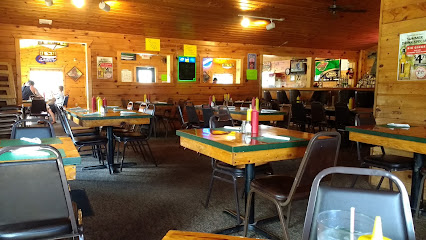
Vacationaire Resort & Clancy's on Island Lake
Experience the tranquility of Island Lake while indulging in delicious local cuisine at Vacationaire Resort & Clancy's in Park Rapids, Minnesota.
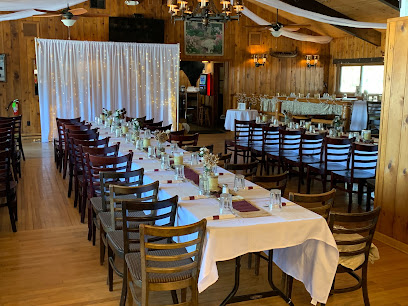
Keg N' Cork
Discover Keg N' Cork, Bemidji's premier Irish pub offering hearty food, local brews, and a lively atmosphere perfect for tourists.
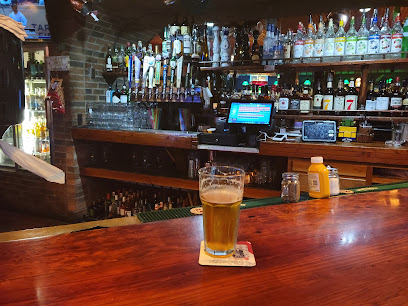
Unwined Up North
Discover the flavors of Minnesota at Unwined Up North, a cozy restaurant in Grand Rapids offering local ingredients and a welcoming atmosphere.
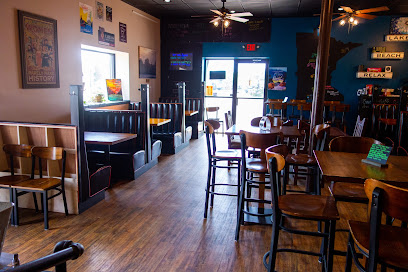
SPIKE'S
Experience the flavors of Minnesota at Spike's Grill in Park Rapids – a perfect dining spot for outdoor enthusiasts and food lovers alike.
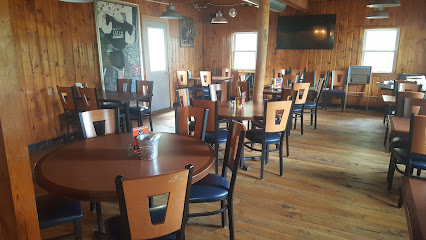
Emmaville Inn
Discover the charm of Emmaville Inn in Park Rapids, MN—a cozy cafe perfect for breakfast and coffee lovers alike.

RENTAL CABINS at Lobos
Experience the tranquility of nature at Lobos Cabins, where cozy accommodations meet the beauty of Minnesota's wilderness.
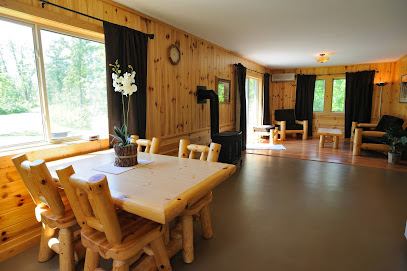
Local Phrases about Itasca State Park
-
- HelloTansin
[tan-sin] - GoodbyeBaajigana
[bah-jee-gah-nah] - YesEa
[eh-ah] - NoAwa
[ah-wah] - Please/You're welcomeMiigwech
[mee-gweh-ch] - Thank youChi miigwech
[chee mee-gweh-ch] - Excuse me/SorryMiigwech
[mee-gweh-ch] - How are you?Aaniin ezhi-ayaayan?
[ah-nee-ee eh-zhee-ah-yah-yahn] - Fine. And you?Zagwaan. Aaniin?
[zah-gwahn. ah-nee] - Do you speak English?Gaa-izhi-ayaadang?
[gah-ee-zhee-ah-yah-dahng] - I don't understandWa'aw
[wah-ahw]
- HelloTansin
-
- I'd like to see the menu, pleaseMenu ganawa'ang, miigwech
[meh-noo gah-nah-wah-ng, mee-gweh-ch] - I don't eat meatMaajiikam, a'aw
[mah-jee-kahm, ah-ahw] - Cheers!Boozhoo!
[boo-zhoo] - I would like to pay, pleaseZaagichigaazowin, miigwech
[zah-gee-chee-gah-zoh-win, mee-gweh-ch]
- I'd like to see the menu, pleaseMenu ganawa'ang, miigwech
-
- Help!Aajiin!
[ah-jeehn] - Go away!Ozaawa!
[oh-zah-wah] - Call the Police!Giga-waabamin!
[gee-gah-wah-bah-meen] - Call a doctor!Gaa-izhi-niimi'idiwag?
[gah-ee-zhee-nee-mee-ee-dee-wahg] - I'm lostNiizhwaaswi
[nee-zhwah-swee] - I'm illNiizhwaaswii
[nee-zhwah-swee]
- Help!Aajiin!
-
- I'd like to buy...Gichi-aya'iganan
[gee-chee-ah-yah-ee-gah-nahn] - I'm just lookingMiinawaa
[mee-nah-wah] - How much is it?Anishinaabe gichi-mookomaan?
[ah-nee-shee-nah-bay gee-chee-moh-koh-mahn] - That's too expensiveGichi-mookomaan
[gee-chee-moh-koh-mahn] - Can you lower the price?Gaa-izhi-mookomaan?
[gah-ee-zhee-moh-koh-mahn]
- I'd like to buy...Gichi-aya'iganan
-
- What time is it?Anishinaabe gichi-niibiin?
[ah-nee-shee-nah-bay gee-chee-nee-been] - It's one o'clockNiizhwaaswi gichi-niiswi
[nee-zhwah-swee gee-chee-nee-swee] - Half past (10)Niizhwaaswi gichi-niiswi pakade
[nee-zhwah-swee gee-chee-nee-swee pah-kah-day] - MorningNiibin
[nee-been] - AfternoonAabitoose
[ah-bee-toh-say] - EveningZaagibagaa
[zah-gee-bah-gah] - YesterdayNiizhwaaswi
[nee-zhwah-swee] - TodayBiindigen
[been-dee-gehn] - TomorrowBakade
[bah-kah-day] - 1Niiswi
[nee-swee] - 2Niiwin
[nee-win] - 3Niswi
[nee-swee] - 4Niiwin
[nee-win] - 5Niswi
[nee-swee] - 6Niiwin
[nee-win] - 7Niswi
[nee-swee] - 8Niiwin
[nee-win] - 9Niswi
[nee-swee] - 10Niiwin
[nee-win]
- What time is it?Anishinaabe gichi-niibiin?
-
- Where's a/the...?Aaniin...?
[ah-nee] - What's the address?Aaniin endaso?
[ah-nee end-ah-soh] - Can you show me (on the map)?Gaa-izhi-ayaadang?
[gah-ee-zhee-ah-yah-dahng] - When's the next (bus)?Aaniin ezhi-ayaayan?
[ah-nee-ee eh-zhee-ah-yah-yahn] - A ticket (to ....)Mii iinwewin
[mee ee-nweh-win]
- Where's a/the...?Aaniin...?
History of Itasca State Park
-
Established in 1891, Itasca State Park is Minnesota's oldest state park. The park was created to preserve the headwaters of the Mississippi River and its surrounding natural beauty. The initial land area was 7,000 acres, and it has since expanded to over 32,000 acres.
-
In 1832, explorer Henry Rowe Schoolcraft identified the source of the Mississippi River at Lake Itasca. Guided by Ojibwe leader Ozawindib, Schoolcraft's expedition confirmed the lake as the river's primary source, a discovery that played a significant role in mapping the region.
-
During the Great Depression, the Civilian Conservation Corps (CCC) was active in Itasca State Park, leaving a lasting legacy. From 1933 to 1942, the CCC developed roads, trails, and buildings, many of which still stand today, contributing to the park's infrastructure and accessibility.
-
Long before European settlers arrived, the area now known as Itasca State Park was inhabited by the Dakota and Ojibwe people. These Indigenous groups utilized the land for hunting, fishing, and gathering, and their cultural heritage remains an integral part of the park's history.
-
Built in 1905, the Douglas Lodge is one of the park's most iconic structures. Named after Minnesota senator Stephen Douglas, the lodge was designed to accommodate visitors seeking to explore the natural beauty of the park. Its rustic architecture reflects the early 20th-century style and remains a popular lodging option.
-
Constructed in the 1920s, the Wilderness Drive was one of the first scenic roads in the park. This 10-mile route loops through the park, offering visitors breathtaking views of old-growth forests and pristine lakes. The drive highlights the park's efforts to balance accessibility with conservation.
-
The Aiton Heights Fire Tower, built in 1937, stands as a testament to forest conservation efforts. Visitors can climb the tower for panoramic views of the park, a reminder of the importance of fire detection and prevention in maintaining the health of the park's vast forests.
-
Itasca State Park is home to some of Minnesota's last remaining old-growth forests. Efforts to preserve these ancient trees have been ongoing since the park's establishment. The towering red and white pines, some over 200 years old, offer a glimpse into the region's ecological past.
-
Named after Jacob V. Brower, the key advocate for the park's creation, the visitor center serves as an educational hub. Exhibits detail the park's natural and cultural history, while interactive displays engage visitors in learning about the significance of preserving such a vital natural resource.
-
Over the years, Itasca State Park has continued to evolve with a strong focus on conservation and sustainable management. Modern efforts include habitat restoration, invasive species management, and educational programs aimed at fostering a deeper appreciation for the natural world.
Itasca State Park Essentials
-
Itasca State Park is located in north-central Minnesota, approximately 220 miles northwest of Minneapolis. The nearest major airport is Minneapolis-Saint Paul International Airport (MSP). From the airport, you can rent a car and drive to the park, which takes about 4 hours. Alternatively, you can take a bus or shuttle service to Bemidji, the nearest city, and then rent a car or take a taxi to the park.
-
Once inside Itasca State Park, the best way to get around is by car. There are several parking areas throughout the park. Bicycles are also a popular way to explore, and there are dedicated bike trails. For those who prefer a more leisurely pace, many of the park's attractions are accessible by foot via the numerous hiking trails. Canoe and kayak rentals are available for exploring the park's lakes and waterways.
-
The official currency is the United States Dollar (USD). Credit and debit cards are widely accepted in the park's visitor centers, lodges, and shops. However, it is advisable to carry some cash for smaller purchases or in case of issues with card payment systems. ATMs are available in nearby towns but not within the park itself.
-
Itasca State Park is generally very safe for tourists. However, standard precautions should be taken. Keep an eye on your belongings, especially in crowded areas like visitor centers. Be aware of wildlife and maintain a safe distance from animals. There are no specific high-crime areas targeting tourists in or around the park.
-
In case of emergency, dial 911 for immediate assistance. The park has ranger stations and first aid facilities. It is recommended to have travel insurance that covers medical emergencies. For minor health issues, there are first aid kits available at visitor centers. The nearest hospital is in Bemidji, approximately 30 miles from the park.
-
Fashion: Do wear comfortable and weather-appropriate clothing. Layering is advisable as temperatures can vary. Avoid wearing flip-flops on hiking trails. Religion: Do respect any cultural or spiritual sites you may encounter, although there are no specific religious customs tied to the park. Public Transport: Do be respectful to shuttle drivers and fellow passengers if using any shuttle services. Greetings: Do greet park staff and fellow hikers with a friendly hello or nod. Eating & Drinking: Do pack out all trash to keep the park clean. Don't feed the wildlife, as it can be harmful to them and you.
-
To experience Itasca State Park like a local, consider visiting during the off-peak seasons in spring and fall when the park is less crowded. Participate in ranger-led programs for insider knowledge about the park's natural and cultural history. Don't miss the Headwaters of the Mississippi River, where you can walk across the river's shallow beginnings. For a unique experience, rent a cabin or campsite and enjoy the serene beauty of the Minnesota wilderness.
Nearby Cities to Itasca State Park
-
Things To Do in Wahpeton
-
Things To Do in Grand Forks
-
Things To Do in Saint Cloud
-
Things To Do in Valley City
-
Things To Do in Duluth
-
Things To Do in Cavalier
-
Things To Do in Ely
-
Things To Do in Jamestown
-
Things To Do in Minneapolis
-
Things To Do in Devils Lake
-
Things To Do in Saint Paul
-
Things To Do in Watertown
-
Things To Do in Winnipeg
-
Things To Do in Brookings
-
Things To Do in Mankato



